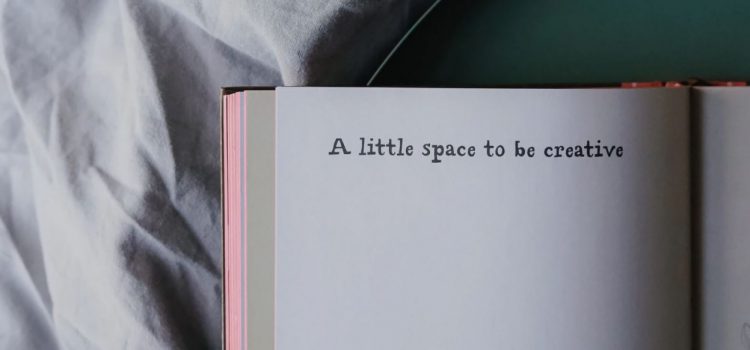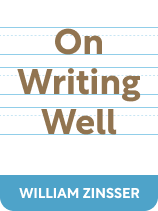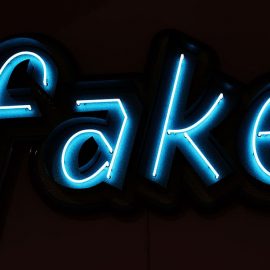

This article is an excerpt from the Shortform book guide to "On Writing Well" by William Zinsser. Shortform has the world's best summaries and analyses of books you should be reading.
Like this article? Sign up for a free trial here .
Do you write creative nonfiction? What can you do to spice your nonfiction piece up?
In his book On Writing Well, William Zinsser explains that nonfiction writing doesn’t have to be flat and bland. You can write nonfiction in ways that will grip readers as much as fiction writing.
From interviews to memoirs to sports writing, here’s how to add some flare to your nonfiction.
Creative Nonfiction
If you want to know how to write creative nonfiction, first dispel the myth that nonfiction is boring. Some people have the misconception that nonfiction writing is uncreative, especially when compared to fiction. But in his book On Writing Better, William Zinsser contends that this isn’t true. Nonfiction writing allows us to creatively explore the truth of everyday life and the experience of being human.
The benefit to writing nonfiction is that you have many people, places, and lives to draw inspiration from without the pressure of creating fictional characters, places, or events. Zinsser encourages writers to be interested in new ideas and experiences because these will give you more engaging topics to write about.
(Shortform note: Experts expand on Zinsser’s idea that nonfiction can be as creative and engaging as fiction, contending that the line between fiction and nonfiction can be a blurry one. There are many fictional stories based heavily on real events, and there are many nonfiction stories that take liberties with the definition of “truth.” For example, The Things They Carried by Tim O’Brien discusses the narrator’s (whose name is also Tim O’Brien) experience in the Vietnam War—yet the book is classified as historical fiction. Thus one main difference between the genres is whether the writer categorizes the work as fiction or nonfiction, thus drawing their own line between fiction and nonfiction.)
By writing simply, clearly, and in your own voice, you’ll have the skills to write in any genre. But writing engaging nonfiction also has its challenges. Zinsser discusses eight specific genres of nonfiction and common problems writers face when writing in these genres.
Here’s how to write different genres of creative nonfiction.
Interviews
Zinsser encourages writers to include interviews incorporating direct quotes and information from another person into their pieces. By including someone else’s perspective in their own words—not yours—your writing will have more humanity and be more engaging.
(Shortform note: Other experts also encourage the use of interviews, noting that they can engage your reader through pathos—an emotional appeal to your audience. By discussing a topic with someone who knows about or is directly affected by it, you’ll connect with your reader. For example, a news story about a flood will be more engaging if the journalist includes an interview with a family whose home was destroyed by the flood than if the journalist just gave the statistics about the flood damage.)
To conduct a good interview, Zinsser offers these steps:
1) Identify who you want to interview. Find someone who knows about the topic you’re covering or would be an interesting profile. Be sincere about your interest in this person and what they have to say. Don’t worry about inconveniencing them with an interview—most people jump at the chance to talk about themselves.
2) Start talking to them, and wait for them to get comfortable. This may mean talking to them multiple times as you gain their trust. You also shouldn’t start taking physical notes yet—that’s a quick way to ensure someone doesn’t relax.
3) As you interview them, find what’s interesting. Don’t be afraid if you don’t know anything about that person’s field. If you don’t know anything about the topic, the average reader probably doesn’t either. Use your lack of knowledge to help guide the interviewee to tell you what you (and ultimately the reader) need to know, and don’t be afraid to ask dumb questions.
4) Be prepared to tell your interviewee to stop so you have time to write things down. Zinsser recommends physically writing things down rather than recording your interview because writing is the whole point. If you record the interview, you become an audio editor. You also risk technological malfunctions with your recorder. In some instances, a recorder can be helpful (such as for capturing diction), but in general, write physical notes.
5) Don’t be afraid to call your interviewee after your conversation if you need clarification on any quotes or ideas.
6) When incorporating the interview into your piece, be sure to uphold the integrity of your interviewee, but also don’t be afraid to rearrange and edit quotes if you can preserve the speaker’s meaning. Doing so is part of your role as a writer and interviewer: to make your interviewee sound good.
Humor
Humor is a writing form that uses a lighthearted or funny approach to reveal absurd or harsh truths about humanity. Zinsser believes sometimes not being “serious” is the best and only way to talk about serious topics, like war, famine, violence, and so on.
For example, in “Thirty-Nine Rules for Making a Hawaiian Funeral into a Drinking Game,” Kristiana Kahakauwila reveals truths about family dynamics and cultural traditions through turning the emotional experience of a funeral into a humorous drinking game.
If you’re writing and find something humorous, include it. Zinsser advises against worrying about whether or not people will think it’s funny—if you genuinely think it’s funny, someone else will too. And you can always change your mind about it later.
Zinsser provides a few tips for writing humor:
- Be comfortable writing well without humor. You should be comfortable with the fundamentals of writing instead of relying on humor to cover up a lack of writing skill.
- Don’t be afraid to talk about everyday life, rather than seeking out quirky topics. Even something mundane can be turned into humor.
- Don’t force humor. Understand that humor is subjective and not everyone will find your humor funny. Let it come naturally, and people will either gravitate toward your humor or not.
- Don’t use exclamation marks. Humor is best written subtly, and an exclamation point will ruin that.
- Avoid overstatements. Like exclamation marks, overstatements aren’t subtle.
Travel
Travel writing describes a place, the people who live there, and what it’s like to be there. But these features should reveal a deeper truth about the city or its people. What’s special about this place and its people?
But travel writers fall into some common traps:
1) Switching attitudes: Writers often start by casually telling readers about their experiences in a new place before changing to a more detached travel guide style. Pick one tone, and keep it consistent throughout the piece.
(Shortform note: To avoid switching attitudes, experts recommend following one narrative thread throughout your travel writing. Doing so will link your piece from beginning to end, creating cohesion. With one main narrative thread, you’ll also be less likely to explore different facts about the place that will cause you to sound like a typical travel guide. For example, in “Heart of Dark Chocolate,” the author begins the piece by describing first tasting Bolivian chocolate and how that compelled him to travel to Bolivia to discover the source of the chocolate. Through this narrative thread, we learn about Bolivia, the rainforest, the cuisine, and the people there.)
2) False novelty: Keep in mind that you are not the first or only person to visit or live in this place. Many people have already visited Paris and described the city’s fashion and the Eiffel Tower—what makes your experience of this place different from everyone else’s?
3) Using clichés: Writers often describe busy Middle Eastern “bazaars” and “exotic” safari trips. These are unoriginal, overused descriptions, and Zinsser advises against using them.
(Shortform note: As you write about your travels, consult this list of common travel clichés to eliminate from your piece, including “a breathtaking view,” “off the beaten path,” and “a blend of old and new.”)
4) Stating the obvious: When describing a new place, writers often state the obvious, such as discussing the desert heat. Heat is a standard characteristic of a desert, so telling the reader this detail is redundant.
(Shortform note: Zinsser doesn’t discuss it here, but stating the obvious is a form of clutter. It creates redundancy and uses more words than necessary. But adding unexpected details does add value, like if there was a random thunderstorm in the desert.)
5) Lacking humanity: Travel writers often describe the things you can do in a city or the typical food there, resulting in a detached and impersonal tone. But these features don’t reveal any deeper truth about the city or its people. What’s special about this place and its people?
(Shortform note: When thinking about Zinsser’s idea of travel writing as understanding the humanity of a place and its people, consider Erich Fromm’s distinction between looking and seeing to improve your ability to find and write deeper truths about a place and its people. He relates looking to an interest in lifeless, immobile artifacts. But unlike simply looking at something, seeing implies a recognition of the life or humanity in something. Seeing requires embracing your own humanity, openness, and interest in the world. So rather than trying to use your writing as a form of looking, write with the intent to see the life of a place and its people.)
Sports
Sportswriting is a form of nonfiction that reports on topics involving sports, such as athletes, games, and competitions. Zinsser notes two problems sportswriters face: making the story about them and flaunting their knowledge.
First, while Zinsser recommends writing from your own perspective, don’t make a story all about you. He believes sportswriters often make themselves and their knowledge the focus rather than the athlete or the game. For example, you can report on a professional basketball game without describing your personal history of playing basketball in grade school.
Second, many sportswriters flaunt their knowledge by describing what it’s like to be an athlete or to suffer a particular injury. But sportswriters don’t have the expertise to comment on the mindset of a certain athlete or to explain what an injury felt like.
Criticisms
Zinsser explains that criticisms are another popular form of nonfiction, where an author reviews the artistic merit of a creative work. This work can be in any medium, such as visual art, literature, cinema, and so on. He believes that the writer should appreciate and be familiar with the medium as a whole since criticisms situate the work into the broader context of other similar works. For example, when writing a review of Ferris Bueller’s Day Off, you could situate the reader into the genre of 1980’s teen movies, such as The Breakfast Club and Grease.
(Shortform note: Zinsser focuses on using criticisms to situate readers into the broader context of a genre. But in How to Read a Book, Mortimer J. Adler and Charles van Doren explain that criticizing a book means to comment, “I agree,” “I disagree,” or “I suspend judgment.” Their views can also be adapted for other media. When you’re criticizing an author, Adler and Van Doren caution against being overly contentious or combative. A discussion isn’t something to be won: It’s an opportunity to discover the truth. Remember that disagreement is an opportunity to learn something new.)
Zinsser provides advice for critics:
1) Go into the criticism with an open mind. If you anticipate hating the movie or book you’re critiquing, this will alter your perception—and your writing—of the work. Zinsser believes a critic who is negative about everything she reviews is being lazy.
(Shortform note: In How to Read a Book, Mortimer J. Adler and Charles van Doren agree with Zinsser’s advice to have an open mind when criticizing. They encourage you to earnestly try to take the author’s point of view as you read. They also advise against playing devil’s advocate by default. Don’t resent the author for being right or teaching you something new.)
2) Don’t be too technical. Zinsser argues that writers use jargon to sound intelligent, like mentioning a specific camera technique in film. Because most readers lack this technical vocabulary, they won’t understand these references.
(Shortform note: While you should avoid using jargon, other experts believe it’s okay to comment on technical aspects, such as the camera angles in a movie. But pointing out these technical aspects should support a larger idea, like how the camera angle creates a certain mood, not just pointing out a technique for the sake of pointing it out. When pointed out to support your commentary, it can enhance your piece since it will provide more description for the reader.)
3) Avoid spoilers. Don’t explain the whole plot of the novel or movie. Instead, give the reader enough information to determine whether or not she wants to read or see the work.
(Shortform note: Many people claim to dislike spoilers since they only have one chance to experience a creative work for the first time—after that the ending is automatically spoiled. But a study found that spoiling a story may actually increase someone’s enjoyment of the work since they’ll be able to make connections about important elements and themes of the story. If you’re unsure about whether to include a spoiler, try including a disclaimer before the portion of the article that contains spoilers, allowing the reader to choose whether or not to spoil the creative work for themselves.)
4) Show, don’t tell. Use examples and descriptions of the artist’s work to illustrate the point you’re making. For example, rather than saying the costumes were drab or boring, write about how the muted brown dress hung loosely on the protagonist.
(Shortform note: Experts explain that showing what you saw is the first step in critiquing a work. You must first describe what you saw, so that you can then analyze, interpret, and evaluate the work—if you don’t provide any descriptions, your reader won’t have the necessary context to understand why you arrived at your conclusion of the piece.)
5) Be confident about your perspective on the work. Don’t backtrack on what you said with phrases like “but it’s too soon to tell.” This undermines your credibility as a critic.
(Shortform note: In How to Read a Book, Mortimer J. Adler and Charles van Doren give another reason to confidently express your perspective. They believe that if you don’t acknowledge and express the feelings that come up as you experience the work, those feelings will fester and actually prevent you from evaluating the piece with a clear head.)
Memoir
In a memoir, a writer describes a specific event or point in time that he experienced. Zinsser explains that unlike an autobiography—which discusses the writer’s life story—a memoir has a narrow focus. If you want to write a memoir, Zinsser recommends picking a specific idea, moment, or theme from your personal experience. Then write about that instance in depth, conveying the importance of that idea to you and your life. The more detailed you can be, the better. Details will paint a more complete picture of this idea or moment.
Zinsser notes that memoir writers are often timid about writing for or about themselves. He believes your story—whatever it is—is important and worth writing. Don’t doubt yourself or wonder if people will want to read it—they will.
Science and Technology
Science and technology writing is a nonfiction genre that centers on technical subjects. Zinsser argues that science and technical writers often lack humanity in their pieces, resulting in an overly-logical and impersonal article. To avoid this, write like yourself, not a robot. Imagine how you’d explain this subject to a friend or family member in a casual conversation, then translate that onto paper.
Zinsser recommends focusing on humanity first and incorporating extra information later if it really adds anything to your story. People don’t want to read through lots of statistics, numbers, and studies even when reading about science and technology. That doesn’t mean you can’t include statistics or studies in your writing, but don’t overdo it—otherwise your article will quickly sound impersonal.
Business
In most companies, employees use some form of written communication, such as emails, memos, copywriting, newsletters, or social media captions. All of these different forms are types of business writing. Zinsser believes his principles of simplicity and clarity are important for business writing—employees and customers who read business writing should understand it. Remember that your whole purpose in writing is to convey an idea to someone. If no one understands your confusing email or memo, why write it?
Zinsser notes that it can be easy to stray from simplicity in business communication. Like scientific or technical writing, business writers often use jargon and confusing sentences to sound important or intelligent. But Zinsser explains that this kind of complex writing confuses a reader and makes her think a company is pretentious.
(Shortform note: The authors of Rework echo Zinsser’s belief in the importance of business writing. They take the idea one step further, saying that companies should hire people who can write simply and clearly, even if it’s for a programming or engineering position. According to a 2013 study, 73.4% of employers now look for good writing skills for new hires. Like Zinsser, these experts believe clear writing is an indicator of clear thinking, which is a skill 93% of employers want. Thus having good writing skills may improve your hiring chances.)
Additionally, Zinsser recommends that you make your business writing sound personal. He believes a reader wants to know that she’s reading the words of a person, not a business. Organizations can’t write emails or memos—people do.
(Shortform note: Companies have embraced Zinsser’s version of personal business writing and are now creating consistent brand voices, or the unique personality of their communications with consumers. One key element of a brand voice is identifying what kind of person your business would be and using that idea to communicate with customers. For example, Nike’s brand voice persona is an athlete who uses strong, inspiring language to motivate consumers.)

———End of Preview———
Like what you just read? Read the rest of the world's best book summary and analysis of William Zinsser's "On Writing Well" at Shortform .
Here's what you'll find in our full On Writing Well summary :
- A back-to-basics approach to the craft of writing
- How to practice simple, clear, and engaging writing—even if you're not a writer
- How to effectively put your ideas into words






